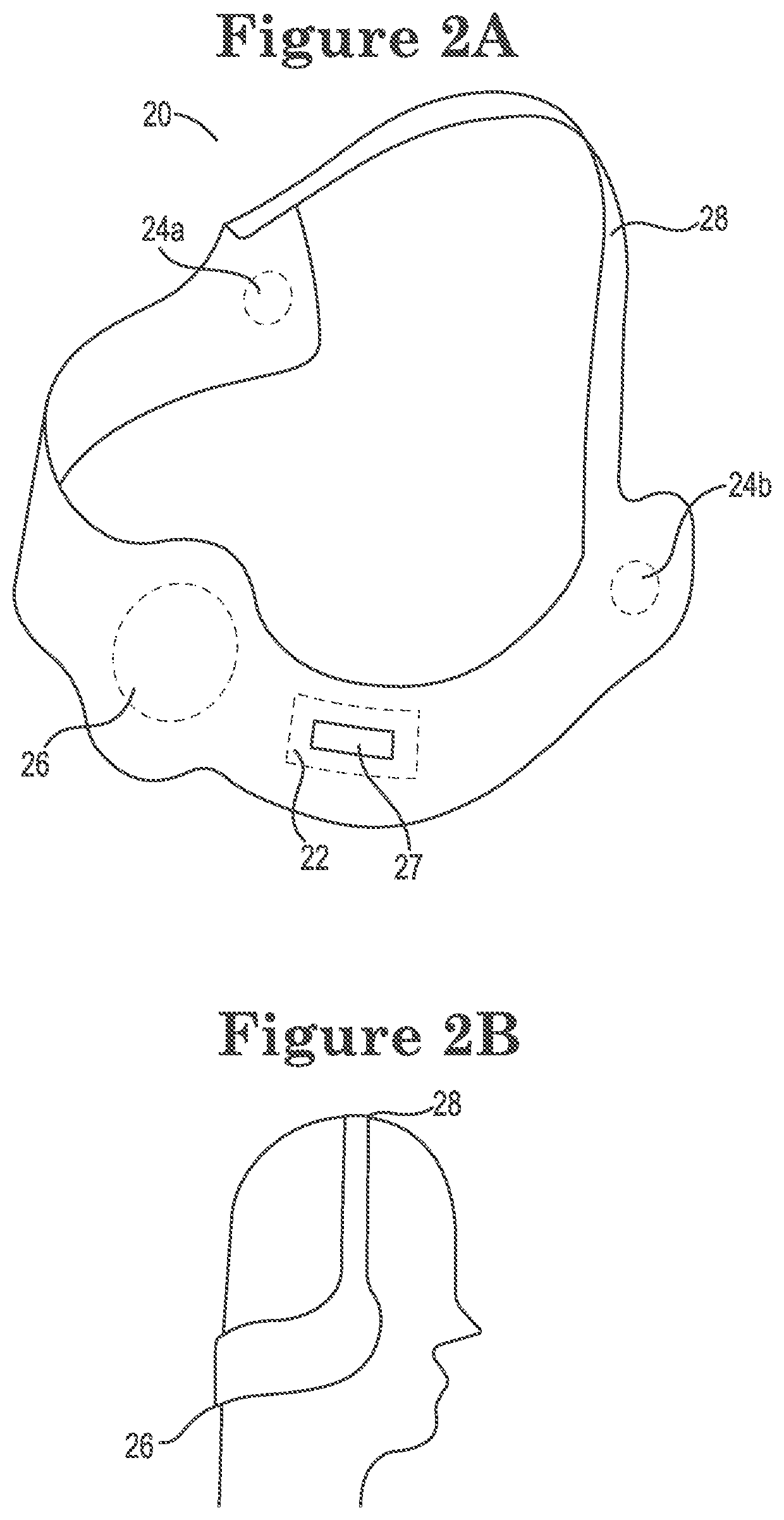Sensory stimulation or monitoring apparatus for the back of neck
a technology for monitoring apparatus and neck, applied in the field of wearable sensory stimulation apparatuses, can solve the problems of design, function and performance limitations of known apparatuses, and achieve the effects of improving audio output performance, reducing volume, and reducing frequency
- Summary
- Abstract
- Description
- Claims
- Application Information
AI Technical Summary
Benefits of technology
Problems solved by technology
Method used
Image
Examples
Embodiment Construction
[0053]The detailed description that follows below is intended to provide illustration to the principles of the invention. This description is not provided to limit the possibilities of the invention described herein, but rather to explain and teach the principles in such a way that a person of ordinary skill in the art could apply them to practice not only to the embodiments described herein, but also to other embodiments that could come into mind when applying the principles. The intention is to not limit the disclosures and claims listed herein, but to also include all similar embodiments.
[0054]The various embodiments described herein detail improvements to currently available devices, such as headphones, ear buds, headsets, headbands, glasses, and the like, that are worn by humans to deliver sound. By including additional speakers or other haptic transducers to these devices, and placing them around the back of the neck along and in contact with the spine, allows lower frequencie...
PUM
 Login to View More
Login to View More Abstract
Description
Claims
Application Information
 Login to View More
Login to View More - R&D
- Intellectual Property
- Life Sciences
- Materials
- Tech Scout
- Unparalleled Data Quality
- Higher Quality Content
- 60% Fewer Hallucinations
Browse by: Latest US Patents, China's latest patents, Technical Efficacy Thesaurus, Application Domain, Technology Topic, Popular Technical Reports.
© 2025 PatSnap. All rights reserved.Legal|Privacy policy|Modern Slavery Act Transparency Statement|Sitemap|About US| Contact US: help@patsnap.com



